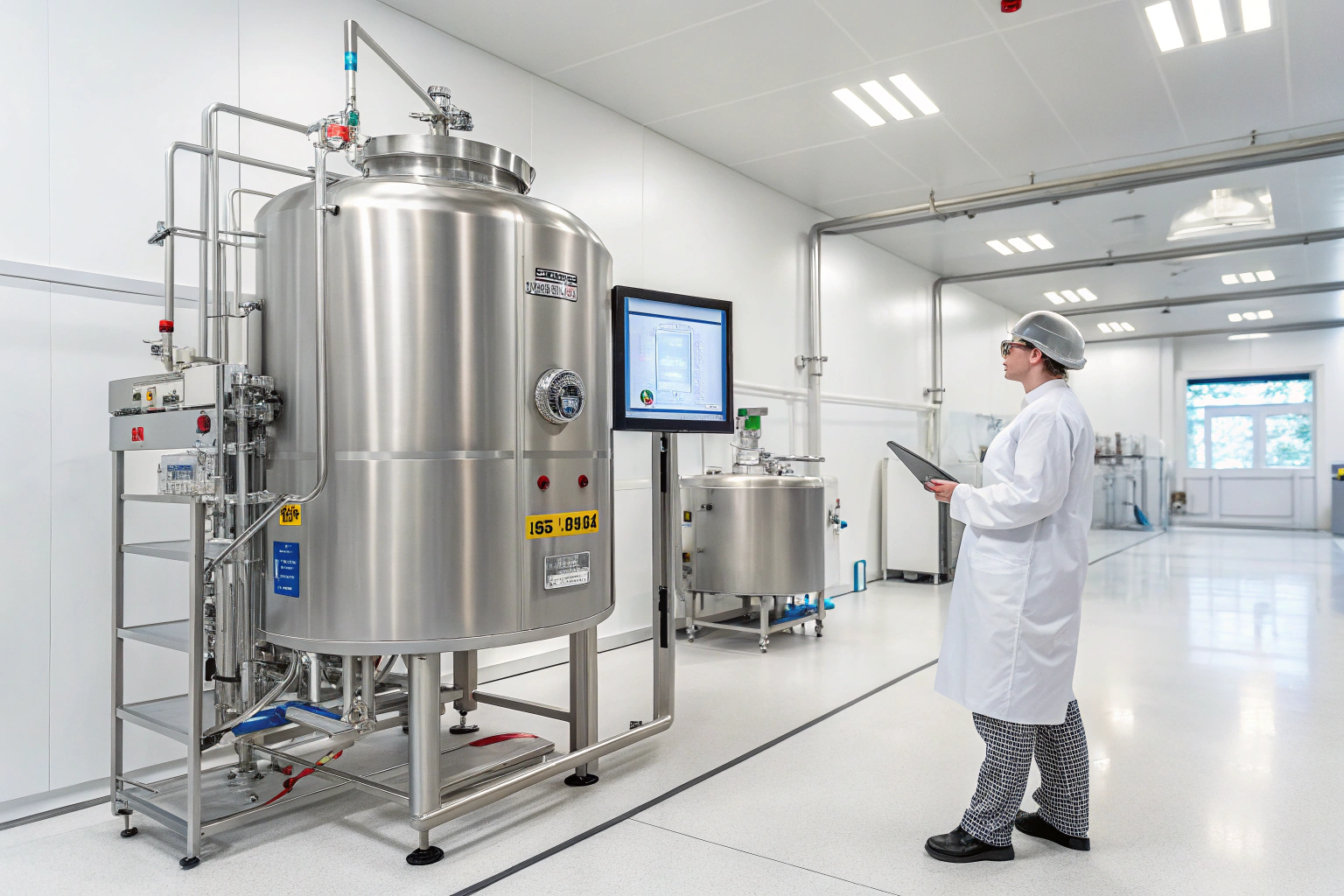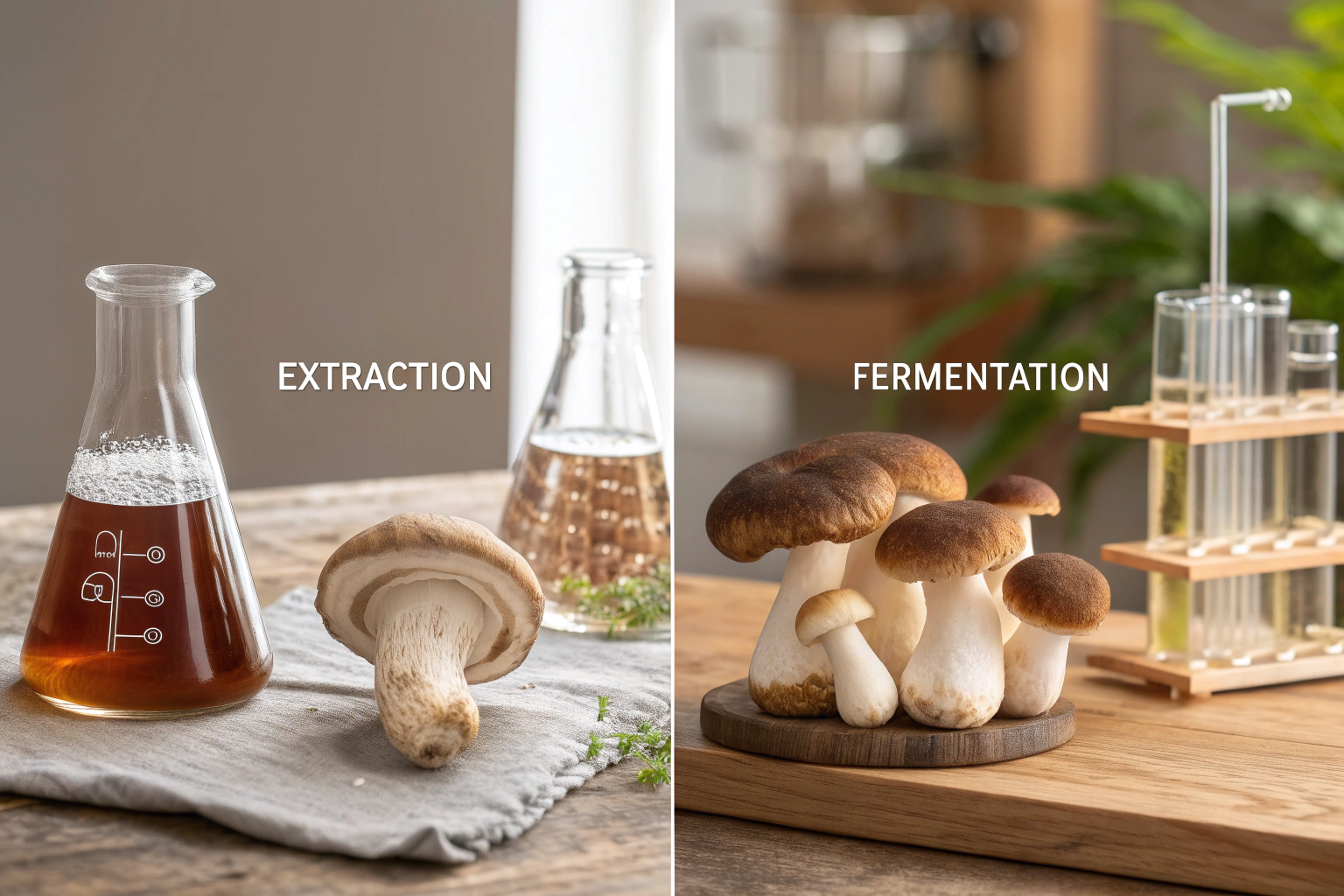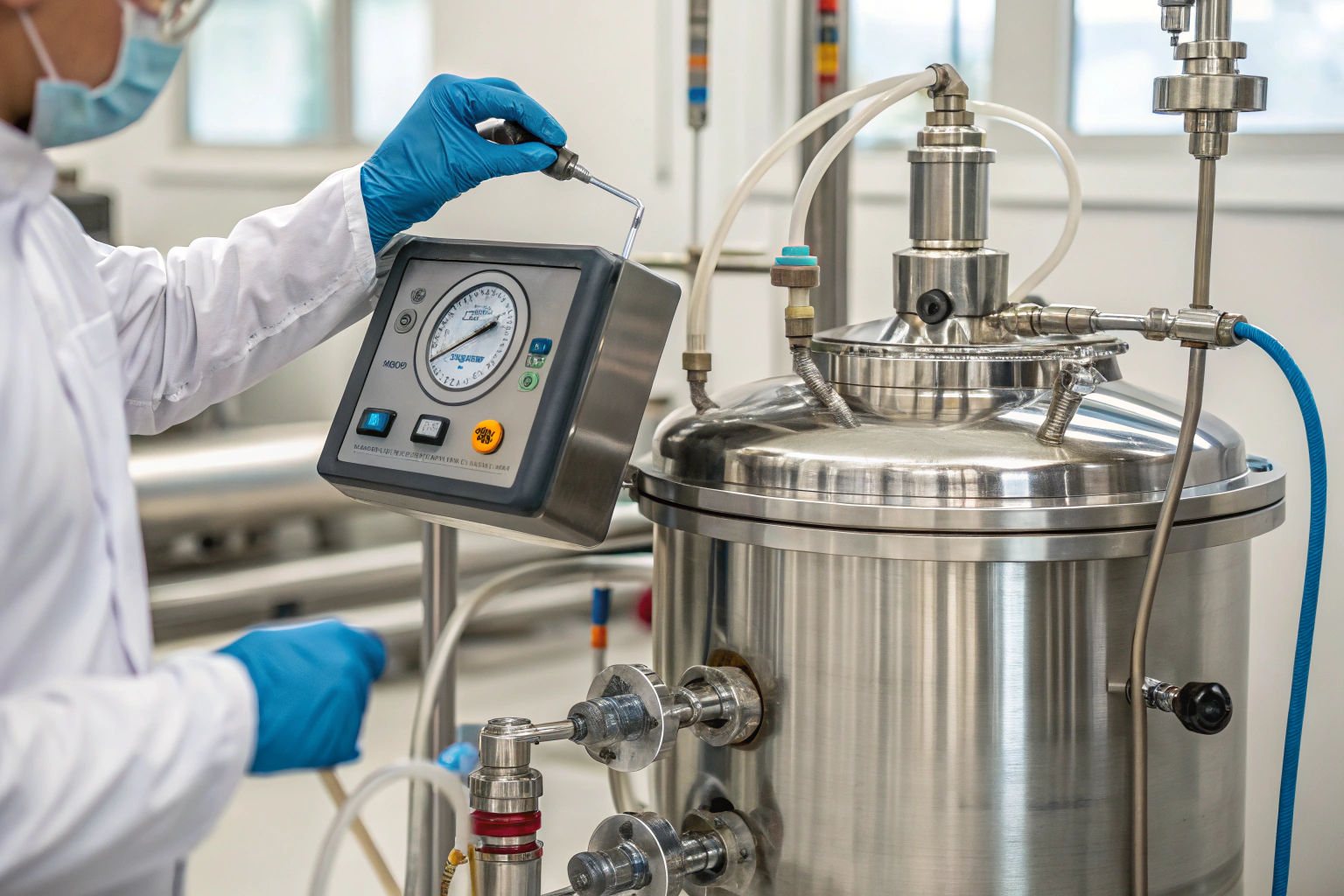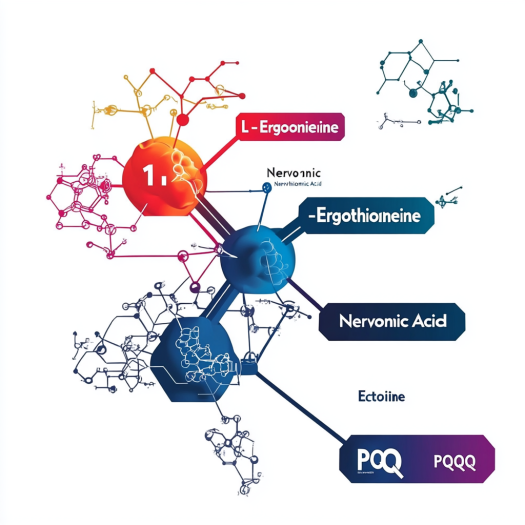
When I first heard about ergothioneine, I thought it was just another antioxidant from mushrooms. I had no idea it would take me deep into fermentation tanks and biotech labs.
Ergothioneine is traditionally found in mushrooms, but today it’s made through precision fermentation using engineered microbes—ensuring higher purity, consistency, and sustainable production at commercial scale.
This journey from soil-grown fungi to stainless steel reactors tells a powerful story—not just of how we make a molecule, but how we unlock nature with science.
Why Don’t We Just Extract Ergothioneine from Mushrooms?
I used to ask this question a lot. I mean, mushrooms contain ergothioneine. Why not just squeeze it out like orange juice?
Extracting ergothioneine directly from mushrooms is inefficient, expensive, and inconsistent, as the content is low, varies between species, and requires intensive purification to reach supplement-grade purity.

Here’s the reality: mushrooms only contain about 0.1–2.0 mg of ergothioneine per gram, depending on species and growing conditions. That means you’d need hundreds of kilos of mushrooms to extract just 1 kilogram of pure ergothioneine.
And let’s not forget:
- Mushroom ergothioneine is mixed with other compounds
- Extraction involves solvents or high heat (not ideal)
- Fungal harvests aren’t stable or scalable
In one of our early R&D experiments, we tried extracting from king oyster mushrooms. The purity was underwhelming. The cost? Let’s just say Jerry (one of our U.S. clients) almost spit out his coffee.
That’s when we turned to synthetic biology.
What Makes Fermentation a Better Choice?
This is where things get exciting—especially for people like me who love clean labels and scalable solutions.
Fermentation allows us to produce ergothioneine in controlled conditions using engineered microbes like E. coli or yeast, resulting in a high-purity, consistent, and solvent-free product suitable for food, supplement, and cosmetic applications.

Think of it like brewing beer—but instead of alcohol, we’re brewing ergothioneine.
Here’s how it works:
- We insert the genes that make ergothioneine into safe microorganisms (usually E. coli or Saccharomyces cerevisiae).
- These microbes are placed in bioreactors1—basically large, high-tech fermentation tanks.
- We feed them nutrients like glucose, nitrogen, and trace minerals.
- As they grow, they start producing ergothioneine inside their cells.
- We harvest, filter, and purify the compound to reach 99%+ purity.
| Method | Purity Level | Yield | Cost Efficiency | Solvent-Free? |
|---|---|---|---|---|
| Mushroom extraction | <20% (raw), 40–60% (after purification) | Very low | Poor | No |
| Fermentation | ≥99% | High | Excellent | Yes |
So, it’s not just a better method—it’s the only method that makes sense if you’re making capsules, beverages, or skincare at scale.
That’s why our Santa Biotech Ergothioneine is proudly fermented and triple-tested for safety.
What Genes Actually Make Ergothioneine?
This part used to sound like science fiction to me. But now, I find it fascinating—and empowering.
Ergothioneine is synthesized by specific genes (mainly egtA to egtE) originally found in fungi like Aspergillus and Mycobacterium, which are inserted into microbial hosts to recreate the biosynthesis pathway.
Basically, ergothioneine doesn’t just “appear” in mushrooms. Fungi make it using a series of enzymes that transform L-histidine into the final compound. These enzymes are encoded by the egt gene cluster.
Here’s a simplified version:
| Gene | Role |
|---|---|
| egtA | Converts histidine to hercynine |
| egtB | Adds sulfur from cysteine |
| egtC | Sulfoxide formation |
| egtD | Methylation steps |
| egtE | Final cyclization to ergothioneine |
We isolate and clone these genes into a microbial host like E. coli or yeast. Then we grow the host in a bioreactor, where it starts doing what fungi do—only faster, cleaner, and without mycelium.
Think of it like hiring a master chef to make one dish over and over. Same recipe. Same ingredients. Perfect results.
How Is Fermented Ergothioneine Purified?
Fermentation gives us a soup of cells, proteins, and broth—but we need a clean, stable white powder for supplements or cosmetics.
Purified ergothioneine is obtained through multi-step downstream processing, including cell lysis, filtration, chromatography, and crystallization—resulting in a stable, odorless white powder with ≥99% purity.

Here’s a typical post-fermentation workflow:
- Harvest the microbial broth
- Break open cells (lysis) to release intracellular ergothioneine
- Filter out debris and separate the compound
- Use chromatography (like HPLC) to isolate it
- Crystallize and dry the final ergothioneine
In our lab, we verify each batch with:
- HPLC purity tests
- Heavy metal analysis
- Microbial contamination check
- Solvent residue testing (spoiler: there is none)
This purity and traceability is why fermented ergothioneine is used in:
- Brain health capsules
- Anti-aging skincare serums
- Functional beverage sachets
If you’re looking to impress regulatory bodies like EFSA or the FDA, this level of precision is a must.
Is Fermented Ergothioneine Safe and Globally Accepted?
Absolutely. And this is where our team has invested years of work.
Fermentation-based ergothioneine is considered safe, solvent-free, and is approved or recognized in the U.S. (GRAS), EU (Novel Food), South Korea (Functional Ingredient), and Japan (Cosmetic Ingredient).
Here’s where things stand:
| Region | Status | Notes |
|---|---|---|
| U.S. | GRAS (FDA) | Up to 30 mg/day allowed in food |
| EU | Novel Food Approved | Use in supplements & cosmetics |
| Japan | COSING Listed | For topical use |
| South Korea | Health Functional Food Approved | With dosage limits |
| China | New Resource Food (Pending) | In regulatory review process |
Our product complies with Santa Biotech’s solvent-free, high-purity standard, and we back it with:
- Full Certificate of Analysis (COA)
- Safety Data Sheet (SDS)
- Non-GMO declaration
- Vegan/Kosher/Halal compliance upon request
And because it’s made in fermentation tanks—not harvested from mushrooms—it’s scalable, traceable, and globally compliant.
Why Does All This Matter to Supplement Brands?
Here’s the truth: consumers today are smart. They care where their ingredients come from.
Fermented ergothioneine offers brands a clean-label, science-backed, sustainable antioxidant that supports cognitive health, aging, and skin protection—without the baggage of raw extraction or questionable sourcing.
For B2B buyers like Jerry (a longtime U.S. client of ours), the difference isn’t just technical—it’s emotional. When he tells customers that his brain health capsules are made with fermented, mushroom-inspired antioxidants that are backed by EFSA and GRAS, people trust it.
Our partners use ergothioneine for:
- Memory support formulas
- Anti-aging skincare serums
- Daily vitality sachets for professionals
And it all starts from one fermentation tank—powered by nature’s logic, perfected by biotechnology.
Conclusion
Ergothioneine used to come from mushrooms. Now it’s made in tanks—cleaner, purer, and better suited for the modern supplement and cosmetic world.
If you’re looking to source high-purity, fermentation-based ergothioneine with full documentation and global readiness, explore what we offer at
👉 Santa Biotech Ergothioneine
From nature’s soil to your product shelf—we’re with you at every step.
-
Learn about the technology behind bioreactors and their crucial role in producing valuable compounds in biotechnology. ↩

